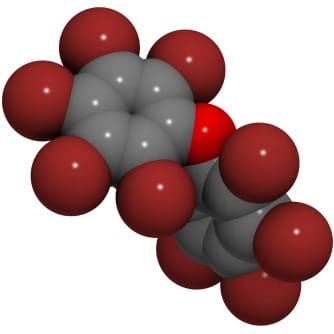Polybrominated diphenyl ethers (PBDEs) are chemicals used as synthetic flame retardants, and are ever-present in common household items such as couches, carpet padding, and electronics. Gale Carey, from the University of New Hampshire (New Hampshire, USA), and collegues exposed laboratory rats to polybrominated diphenyl ethers, finding that it disrupted their metabolism to cause development of metabolic obesity and enlarged livers. Further, fat cells isolated from rats dosed with high levels of flame retardants daily for one month developed a sensitivity to hormones that was similar to the sensitivity experienced by people who are overweight: the fat cells became more sensitive to epinephrine and less sensitive to insulin. The researchers posit that suppression of a key metabolic enzyme – phosphoenolpyruvate carboxykinase, or PEPCK – in the liver, causes the flame retardant-induced insulin resistance. PEPCK, which is responsible for sugar and fat metabolism, dropped by nearly 50% in livers of rats exposed to flame retardants for just one month, compared to controls. For more than 10 years, Carey and more than a dozen graduate and undergraduate students have collaborated with researchers from several universities and industries across the nation to examine the persistent organic environmental chemicals that could impact human health. “The average person probably has about 300 chemicals in her body that are manmade,” comments the lead investigator.
Flame Retardant Chemicals May Prompt Metabolic Dysfunction
Carey G. Presentation at Experimental Biology 2015 Annual Meeting, 29 March 2015. Previous study: Nash JT, Szabo DT, Carey GB. “Polybrominated diphenyl ethers alter hepatic phosphoenolpyruvate carboxykinase enzyme kinetics in male Wistar rats: implications for lipid and glucose metabolism,” J Toxicol Environ Health A. 2013;76(2):142-56.
RELATED ARTICLES




